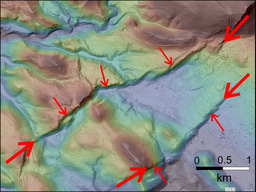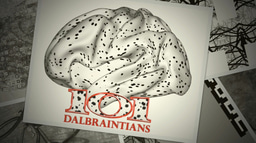Beyond the Pain: Decoding Body's Silent Signals Before Injury Strikes
Published in Bioengineering & Biotechnology and Materials

Introduction
Envision the human body as a complex, well-oiled machine, where muscles, joints, nerves and ligaments work together seamlessly to facilitate the smooth movements that carry us through our day. Within this smooth operation are faint signals, though, akin to the subtle sounds of a machine warming up or calibrating itself, indicating a potential malfunction. This ignited the flame for our most recent research project.
Drawing on my experience as a sports physiotherapist, I've observed countless individuals whose minor changes in movement were precursors to more significant issues. These observations led me to consider the following: Could these subtle shifts be our body's way of signalling potential problems, much like the way a car's dashboard lights warn us of issues long before a breakdown?
Our research was driven by the desire to decode these signals, to understand how the body communicates its distress through movement patterns before pain ever becomes a part of the equation. This exploration into the body's 'early warning system' aimed to uncover the silent signals that precede injury, offering a new perspective on how we can pre-emptively address and prevent physical ailments.
The Story Behind the Research
Our project was a collaboration between the sports physiotherapy clinic and the mechanical engineering research unit at the University of Melbourne, centred on a mutual objective. This partnership was fuelled by the potential benefits: it enabled physiotherapists to incorporate a more objective, data-driven approach into their practice and provided a real-world application for cutting-edge engineering technology. This interdisciplinary effort was crucial for converting the subtle physical signals into quantifiable data, capable of predicting potential injuries before they manifest. By combining the clinical expertise with the technical innovation, we showcased the effectiveness of merging clinical insights with engineering solutions to confront a common health challenge seen in musculoskeletal medicine.
Key Findings and Their Significance
Our research has unearthed some important findings: the human body pre-emptively communicates its distress through minor, yet distinct, alterations in how we move. These alterations, or secondary movement patterns, emerge as the body's natural response to compensate for the inefficiencies in primary movements caused by various factors such as nerve tension, muscle stiffness, joint issues, and more. This revelation is crucial, as it affirms the intricate and highly connected nature of the human body, capable of initiating preventive measures against discomfort or injury well before we become consciously aware of any pain.
The significance of this finding cannot be overstated. It offers a new perspective on injury prevention and management, suggesting that by closely observing and interpreting these early warning signs, healthcare professionals can intervene sooner. This early intervention can potentially prevent the progression of minor issues into more serious injuries, thereby optimising individual health and performance.
For clinicians and therapists, this insight provides a more nuanced understanding of the body's warning system, enabling them to refine their assessment and treatment strategies. They can now look beyond the obvious symptoms and delve into the subtler cues that precede them, offering a proactive rather than reactive approach to healthcare.
Athletes, as well, stand to benefit immensely from this research. By becoming attuned to the secondary movement patterns their bodies exhibit, they can make informed decisions about their training and recovery processes, minimizing the risk of injury and enhancing their performance through more precise and targeted interventions.
Moreover, this research has broader implications for the general population. It empowers individuals with the knowledge that their bodies are equipped with an internal warning system, encouraging them to pay closer attention to the subtle signs their bodies may be sending. This awareness can lead to more proactive health and wellness decisions, fostering a culture of prevention and self-care.
Ultimately, our findings open new avenues for research, clinical practice, and everyday health maintenance, highlighting the importance of early detection and intervention in promoting optimal physical well-being.
Going back to the machine analogy, in simpler terms, imagine your body as a sophisticated car. Even before a tire goes flat, subtle changes in handling might hint at the impending issue. If we can understand and interpret these early signs, we can address the root cause before a full-blown 'breakdown' occurs. This research opens new avenues not just for clinicians and athletes but for anyone interested in maintaining optimal physical health.
Looking Forward
Our research has solid implications. It's not just about helping people avoid or recover from injuries; it's about changing how we understand and monitor the way we move. We see a big potential in using wearable technology to track these subtle movement changes as they happen, giving people instant feedback to help prevent injuries before they occur.
We're looking into how we can use what we've learned in everyday life, sports training, and rehab programs. Our goal is to not just fix injuries but to minimise them from happening in the first place.
Concluding thoughts - The Traffic Light System and what it means for you.
- Green (Go): When you're in the green zone, you're at your best. Your body moves efficiently, you feel great, and you're able to perform at your peak. This is the optimal state of health and physical capability, where movement patterns are flawless, and the risk of injury is minimal.
- Yellow (Caution): The yellow zone signals caution. Here, you might begin to notice subtle shifts in your movement or slight discomforts—these are secondary movement patterns that emerge due to minor imbalances, stiffness, or the onset of fatigue. While not immediately alarming, these signs are your body's way of telling you to slow down and pay attention. It's in this zone that our innovative technology can be most beneficial, identifying these early warnings and guiding you back to green before issues escalate.
- Red (Stop): Landing in the red zone means it's time to stop and seek help. Pain, discomfort, and dysfunction have become evident, indicating that the early signs were overlooked or unaddressed. Recovery and rehabilitation become the focus, with the aim of returning you to the green zone as safely and efficiently as possible.
Where do you see yourself in the traffic light system? (p.s. majority of us are in the yellow!)
Can you recall moving from green to yellow? Think back to any subtle changes in how your body felt or moved. Identifying these early signs is key to preventing further issues.
How do you perceive technology's role in maintaining your green zone status? Would love to hear your thoughts.
Thank you on behalf of the research team,
Kusal Goonewardena (PhD)
APA Titled Sports & Exercise Physiotherapist
Research Team
Jihoon Lim, Lei Lu, Jefferson Zhe Liu & Ying Tan.
Follow the Topic
-
Scientific Data

A peer-reviewed, open-access journal for descriptions of datasets, and research that advances the sharing and reuse of scientific data.
Related Collections
With Collections, you can get published faster and increase your visibility.
Data for crop management
Publishing Model: Open Access
Deadline: Jan 17, 2026
Computed Tomography (CT) Datasets
Publishing Model: Open Access
Deadline: Feb 21, 2026




Please sign in or register for FREE
If you are a registered user on Research Communities by Springer Nature, please sign in